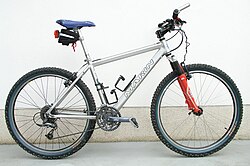Scientists predict life on many more planets
Earth may not be the only inhabitable planet in the universe, new research has indicated.
Scientists have designed new models for testing whether a planet could support life by searching for evidence of underground water, it was reported.
Instead of looking for surface water, the new tools identify whether there may be water kept liquid by core heat, according to the BBC.
The development could mean more planets are found to be capable of sustaining life forms.
The research, which was presented at the British Science Festival in Aberdeen, challenges the "Goldilocks" theory that planets need to be within a defined distance from the sun to support life before water either freezes or evaporates.
Sean McMahon, a PhD student from Aberdeen University, said: "It's the idea of a range of distances from a star within which the surface of an Earthlike planet is not too hot or too cold for water to be liquid.
"So traditionally people have said that if a planet is in this Goldilocks zone – not too hot and not too cold – then it can have liquid water on its surface and be a habitable planet."
The new research could be an important breakthrough in establishing signs of life where planets generate their own heat rather than receiving heat from a star like the sun.
Prof John Parnell, lead researcher from Aberdeen University, said: "There is a significant habitat for microorganisms below the surface of the Earth, extending down several kilometres.
"And some workers believe that the bulk of life on Earth could even reside in this deep biosphere."
Mr McMahon added: "If you take into account the possibility of deep biospheres, then you have a problem reconciling that with the idea of a narrow habitable zone defined only by conditions at the surface.
"There will be several times more [habitable] planets."

 86 Comments
86 Comments




